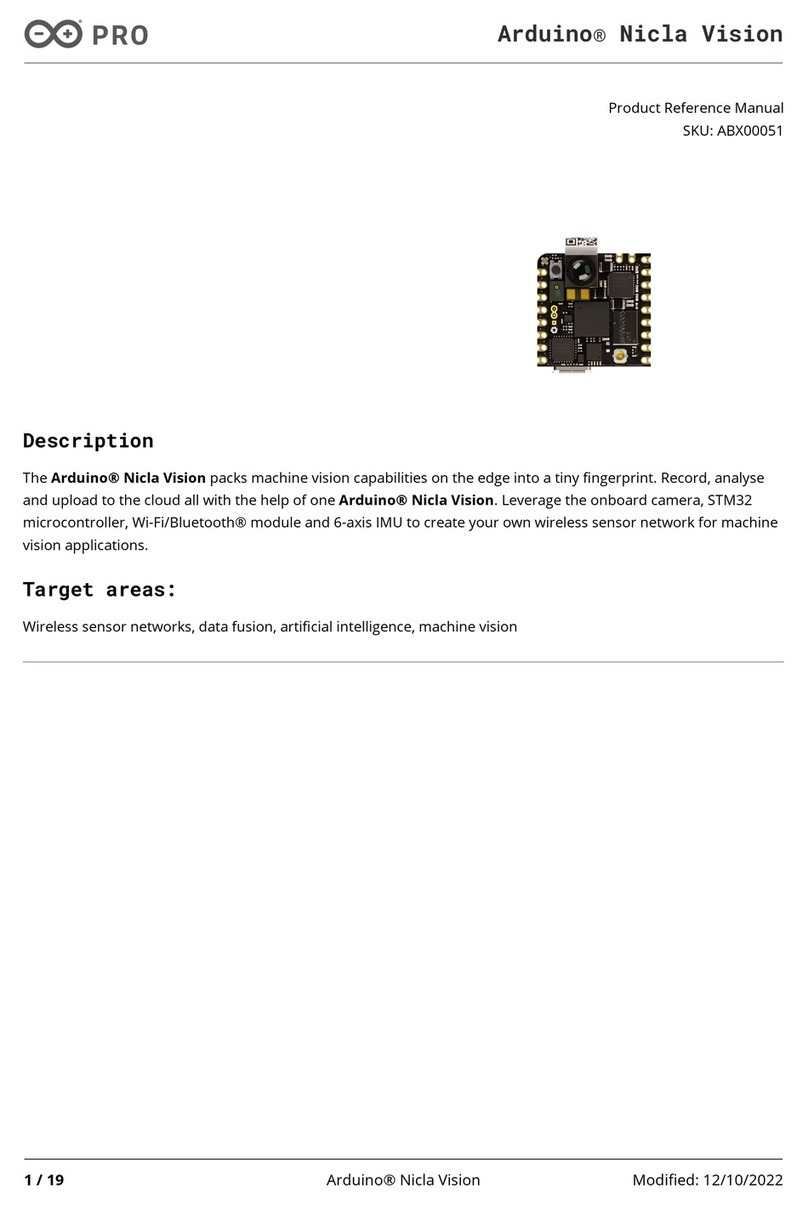4.2 Getting Started - Arduino Web Editor
All Arduino boards, including this one, work out-of-the-box on the Arduino Web Editor [2], by just installing a simple
plugin.
The Arduino Web Editor is hosted online, therefore it will always be up-to-date with the latest features and support
for all boards. Follow [3] to start coding on the browser and upload your sketches onto your board.
4.3 Getting Started - Arduino IoT Cloud
All Arduino IoT enabled products are supported on Arduino IoT Cloud which allows you to log, graph and analyze
sensor data, trigger events, and automate your home or business.
4.4 Sample Sketches
Sample sketches can be found either in the “Examples” menu in the Arduino IDE or in the “Documentation” section
of the Arduino Pro website [4]
4.5 Online Resources
Now that you have gone through the basics of what you can do with the board you can explore the endless
possibilities it provides by checking exciting projects on ProjectHub [5], the Arduino Library Reference [6] and the
online store [7] where you will be able to complement your board with sensors, actuators and more
4.6 Board Recovery
In case a sketch locks up the processor and the board is not reachable anymore via USB it is possible to enter
bootloader mode by double-tapping the reset button right after power up.
5 Connector Pinouts
The Portenta Breakout Board provides easy access to the pins on the high density connector of the Portenta family.
The Portenta Breakout Board is shipped in a headerless configuration to provide flexibility in using 2.54mm
compatible connectors to meet their specific application.




























